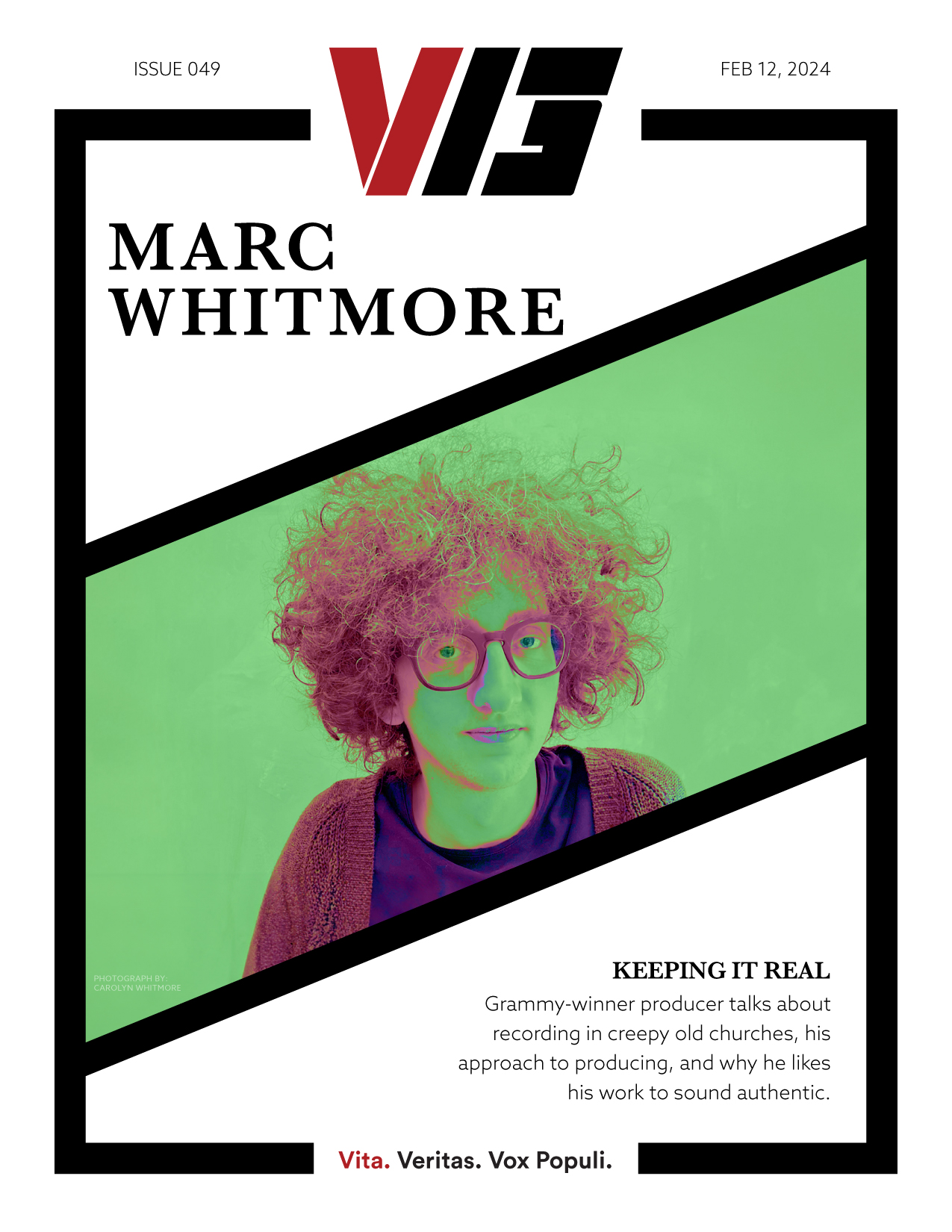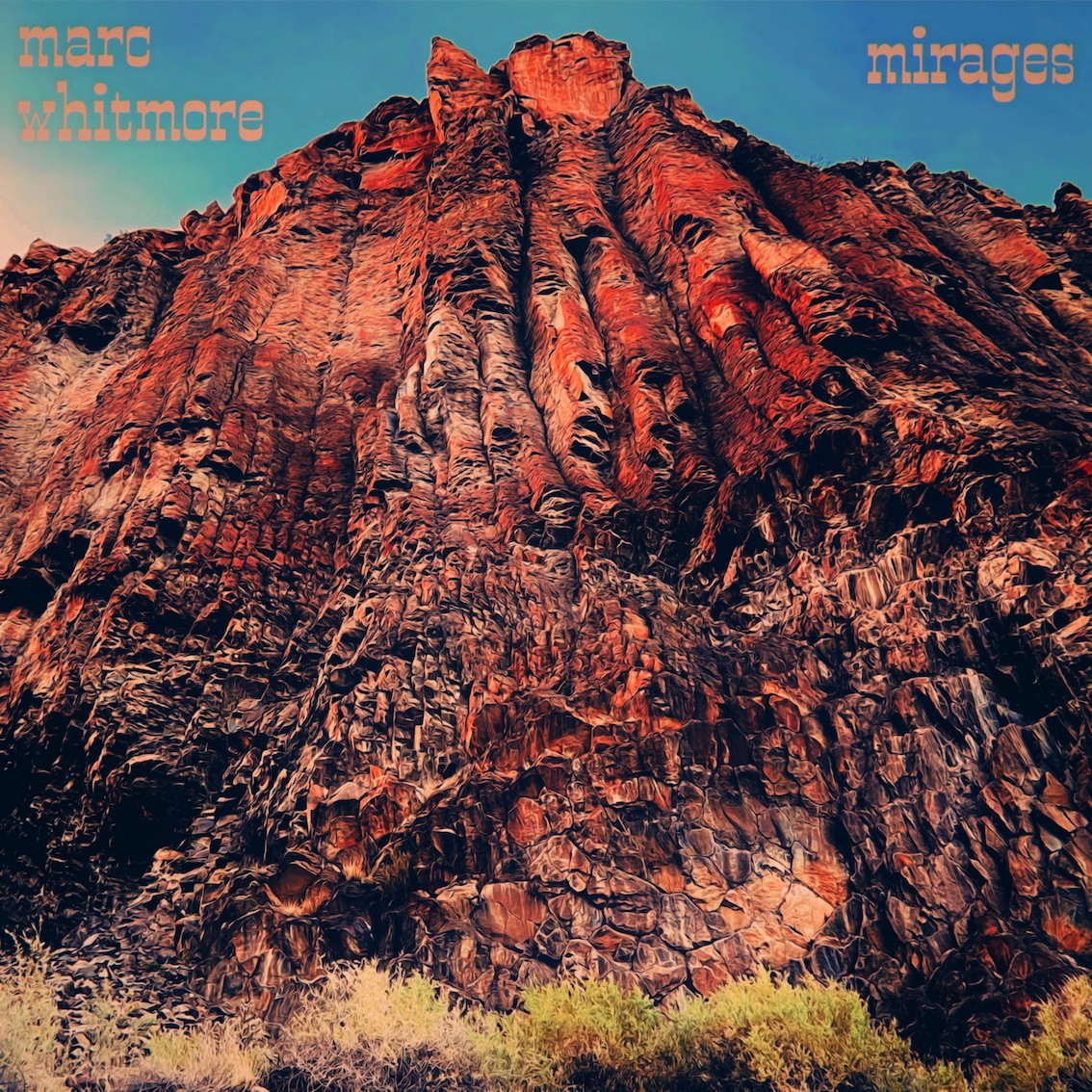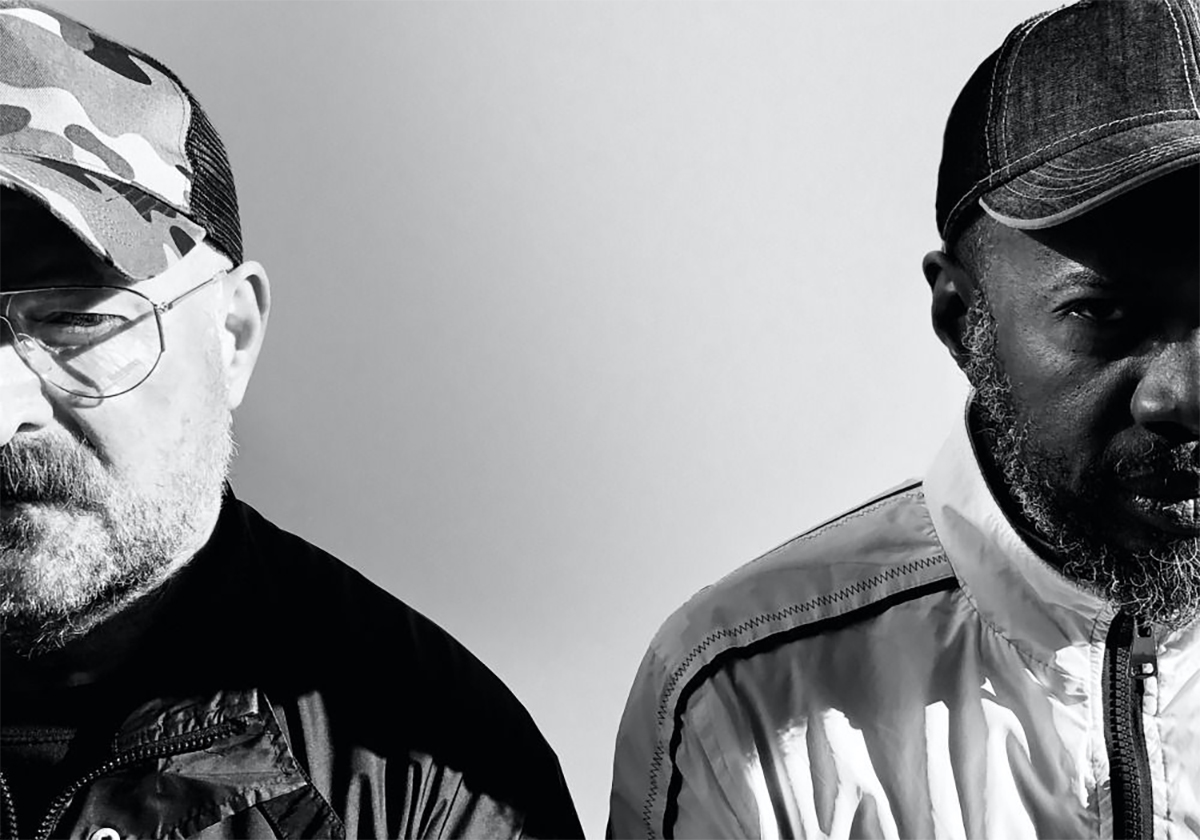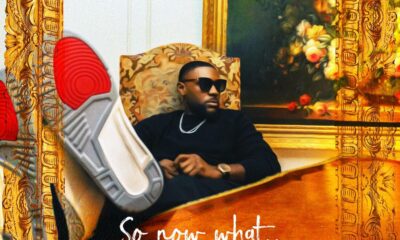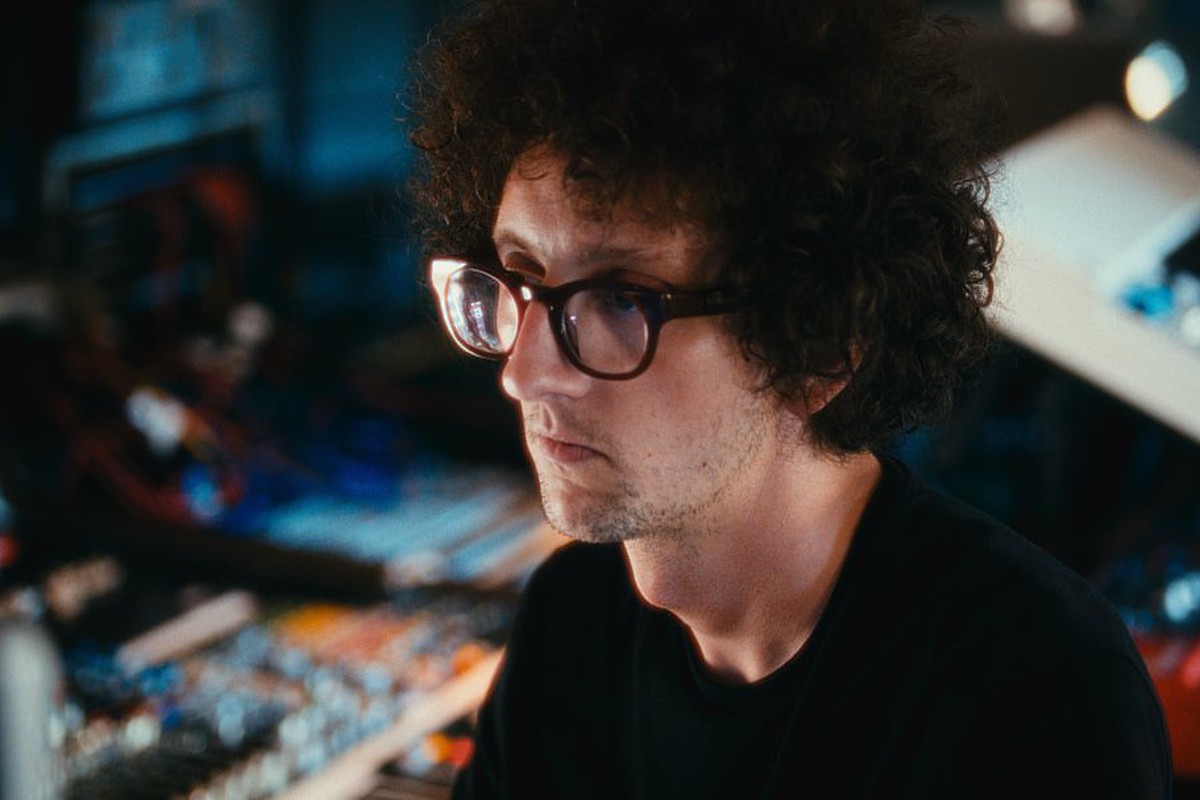
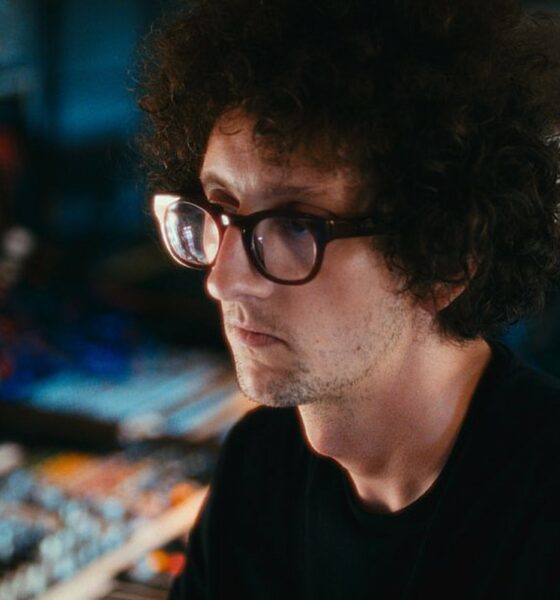
Indie
Marc Whitmore: “If someone wants to record in a big creepy church, we should really probably go record in a big creepy church…”
In our latest Cover Story, engineer/producer Marc Whitmore talks about Grammy nominations, and why he likes recording in big creepy churches.
The name Marc Whitmore may not be one that is too familiar to some of our readers. However, a couple of weeks after this conversation took place, the engineer/producer/mixer was due to fly out to Los Angeles where he was nominated for his second Grammy award. Already 2022 winner of the prestigious Album of the Year award for his contribution to Jon Batiste’s
2021 album We Are, Whitmore is back in LA again for his engineering efforts on Batiste’s latest album, 2023’s World Music Radio.
As if working on Grammy-nominated albums wasn’t enough to keep him busy, Marc also recently released his solo album, Mirages (read all about that here).
In our latest cover story, we spoke to Marc about the importance of being recognised for his work, his love of recording in creepy old churches, and how he loves to keep things authentic.
Thanks for your time, Marc. Now, a lot is going on with you at the moment so before we get onto the album, there’s the Grammy nomination coming up. It’s not a bad way to start the year, is it?
“I’m more focused on the Grammy thing right now, honestly. My solo work is… it was just time to do it. I’m getting stoked to go out to LA for the Grammys and going to NAMM and making it a whole big couple of weeks.”
It’s a great way to start the year. I wanted to ask take a different approach to your work. This is now the second nomination you’ve had with Jon. How does it feel to work with an artist that you’re clearly on the same wavelength with and, not only that but the way you get recognized across the wider industry? That must be rewarding.
“It’s work that I’m proud got noticed. There’s something about the stuff we’ve done in both albums, they’re conceptual, all-over-the-place albums with a bunch of different genres and stuff. Jon has always chosen the right place, and the right people for what he’s trying to get. There’s a lot of more modern R&B type of vibes on his albums that I’m not as involved with whereas the stuff that’s a little more distorted or vintage sounding or a little more rock and roll is where I come in so it’s cool to be on an album like that which has the contrast even more so than just a straight rock record.”
Working on an album that’s maybe outside your comfort zone for parts of it, what, what do you learn from that?
“I don’t know that it’s outside of my comfort zone because I don’t think about the genre too much or necessarily like where it fits or what it is while I’m working on it. It’s just using the energy of the artist, the space, and everything to create whatever is going on that day is how I see it a lot. I also really like doing new things. I’ve never really worked on five rock albums in a row. I don’t hear the genre as much as the soundscape and I don’t seem to have a problem with adapting to it.”
What’s the approach you take when you’re working on a record with Jon?
“I keep it pretty analogue and sometimes that’s been weird at first, but it always ends up cool with more modern producers or people who are a little more used to working in a laptop-type situation. If I work on a rock album, for example, everybody’s down to use the tape machine and do live takes. Everybody’s hip to that so it’s interesting to mesh with producers who don’t work that way. They also make hip-hop, my guys don’t. I tend to not use the tape machine, but like still sort of force an analog flow with all the sessions I do with Jon. I keep everything on the console and keep it live and fresh. I think that’s cool as it ends up sounding like older hip hop.”
When you work with somebody new that’s maybe not worked the way you’ve worked before, what’s the reaction like?
“It’s always different. I’ve had some hesitation from people, but, like I said, almost always the people who hesitate at the end of the day, they’re like, “Whoa…” If you use the console and all these compressors and dial it in. it can be next level.”
You’ve been inspired by recording techniques of the 70s. When you were growing up, were there records that resonated with you, where you listened to the sound or the production and just thought, wow, that’s something different?
“When I was really little, my parents listened to a lot of disco or oldies, so I had a better understanding at least of older-sounding things. Honestly, when I was a teenager, I found a big box of records in my parent’s basement and the Jimi Hendrix Experience was the first one that I listened to. That just sent me into like the late sixties, early seventies, that sort of sound. To me also, it’s about a lot of the limitations that they had in the studio.
If the band had a budget, you still have to be rehearsed and know in the studio what the hell you’re doing, record it, decide on a take, and then mix it or come back later and still pay to mix it in a room together. I think that even more than the equipment or the tape, is what makes a lot of those records so inspiring there was no way to overpick it.”
“I found a big box of records in my parent’s basement and, the Jimi Hendrix Experience was the first one that I listened to. That just sent me into like the late sixties, early seventies, that sort of sound”
We have a photographer friend that runs a photography studio near us in the UK and going back to the 70s when they recorded all the TV shows on film, it’s where they used to go and edit the films, it’s got all the old it’s got all the old cinema cameras in where they’d sit in the viewing room and chop the film as they were editing it. It’s just mind-blowing to think how things have changed. In terms of modern techniques, is that something you incorporate into your work?
“Honestly, I do a lot of editing in Pro Tools. When I’m in the studio or a space with a band, I’m really about the live capture thing but, if I come back to the record later and they want it to be more polished sounding, like I’m cool with that. If it was super vibey, but maybe only like 85% there, I like fixing it up to make it a perfect take instead of making them do it again.
That’s the way I am. I don’t like to do things more than two or three times. I feel like a lot of bands just lose it after that many times. I’m versed in Pro Tools and editing and cleaning stuff up like that. It’s not even so much the 60s, 70s sound for me anymore as it is more the vibe but I like things to sound polished.”
I’m interested to hear about your choice of different locations. I read you’ve recorded everywhere from 19th-century barns to old churches, which sounds incredible. What do you look for in a location? Do you always have something in mind, or do you just come across places?
“It depends. Sometimes you start to have the conversation about what you like, you can always use reverb plugins or whatever to fake it, but I like it if somebody comes to me and says they want this to sound like it was recorded in a big creepy church, okay, we should, really, really probably go record it in a big creepy church.
Jon, he’s a guy who understands that. Like when we were recording in old barns, that was more just improvising and writing every night. The one setup was like a 250-year-old barn and the door wouldn’t stay closed. It was November, it was cold and we would record all night, basically in this barn. We just had limited resources and just forced to sit in this room where you hear animals and wind and stuff. All we had was a guitar amp and a piano and some microphones.”
That’s taking it back to basics, isn’t it?
“Yeah. We were in no rush to do anything so we tried to use the space like using a guitar amp to add reverb to the piano and stuff like that. Trying different weird mic things, changing the mics around each night and maybe rotating the piano or something to go for something new.”
You said you didn’t need to rush but, I believe, on Jon’s new record, you banged out 40 tracks in a week?
“That was at a more proper Shangri La session in Malibu. I think we used the tape machine a little bit but, other than that I found that, when I went to Shangri La, a few people told me that it’s an awesome studio, but it was a little more set up to be like a demo studio. I got the vibe that a lot of people go there to record without necessarily planning on using all of it. It’s more of a demo writing space but it’s an amazing studio. The engineers, they’re great.
We had a week or so and, each day, each six hours, we had a different person coming in, a different producer, a top-line writer or a drummer, the room was pretty full the whole time. It was like a big collaborative thing which was what I discussed with Jon beforehand. This could go down a real rabbit hole, there are a lot of people, and he has never done that before and I had never really done that too much before. Shangri La is truly a 1970s recording studio. They have a seventies console. It’s a little fucked up. We were like pounding on it a lot to get it to work, but it sounds amazing. They have the gear so if you want to do a fully analogue session there, it feels like you are transported back to 1972.”
That must have been like a home from home for you.
“Yeah. We have access to this like a cool room. We should just force everybody to jam and record it all. We’ll just get experimental with it. We can record just jams for 40 minutes then you choose your favorite parts and turn that into a song. That’s what he did for most of the tracks that I did on this album. There were a few days where everybody was in the control room and we just had like a vocalist and those were the vocals that ended up on the album.”
“Shangri La is truly a 1970s recording studio. They have a seventies console. It’s a little fucked up. If you want to do a fully analogue session there, it feels like you are transported back to 1972.”
That sounds that, even though it was a one-week session with so many songs and so many people, it still sounds quite laid back…
“That was part of it too. For me, doing the analogue workflow, I don’t want to burn out and I do like the pace. It makes everybody in the room have to be at the same pace, doing the same thing. It always sucks to me when, if I’m doing a record track by track and I have like six musicians in the room, as soon as the guitar player is done, now it’s at the bass player’s turn. Then you’re, just sitting there in Pro Tools all day. Nobody is even hanging out. I like working on a console and not fucking with the computer too much, it just forces everybody to be on the same page, you know?
Then, honestly, that’s like what we were saying earlier, where some people are not into that, that was usually where it was like “let’s do another… no, the tape machine’s rewinding. You have to wait..””
Is that approach a similar approach you took when you were working on your solo work?
“Sort of. On my solo stuff, I’m playing everything so it’s a little more on the computer while I’m playing. Mixwise, I set aside a week to just do analogue mixes of all the songs and then I spend more time on mastering it than mixing it because, even with mixes, I still like that energy of doing it in a couple of hours. The mixes from the time that you’re working on the song and creating are always the coolest to me because you’re creating it based on what you’re hearing.
If that changes, like I’ve done stuff where the vocals sound amazing then, later on, they decided to turn the guitar down and now the vocals don’t sound as good because like, now you can hear all the little pitchy details in the vocals. Like the Rolling Stones, the guitar means Mick Jagger doesn’t have to be super in pitch if the guitar is the loudest thing in the mix, you know what I mean? If the guitar was turned down and smooth in a Rolling Stones song, his voice wouldn’t sound as cool.”
Going back to what we talked about, recording in creepy old churches and bars and things like that. Is that an approach you took on this record, or was it purely studio?
“This record was almost all at Shangri La. There was one song that Jon and I recorded six years ago in New York called “Boom For Real”. That was just one that, whenever we’d see each other, we’d listen to a couple of tracks that we’d done over the years and that one was on the list of man, what was this? It was just some crazy hip-hop. A lot of the stuff that we did in the really old barn situation was during COVID, the height of COVID, and he was working on the Colbert show at the time.
He got out of the city and he was doing it remotely in rural Pennsylvania so I went out there for a month and we just quarantined and it was just me, him and his manager for a month. They would film during the day for his job, and then we would record at night. For about a month straight, we just did that. He barely sleeps.”
When you write your solo material, do you have to put yourself in a certain mindset and do you think there’s a perfect setting to listen to your music?
“It was a few things. I was ready to make an album and I wanted to make something a little like scrappier. I live out in New Mexico, it’s just really trippy. Most of the time I’ll just like go for drives out here where there are dried-up oceans that are like 50 million years old or white dunes like Tatooine in Star Wars. That was filmed in New Mexico. So you can just go there and walk around that.
There’s a whole lot of really crazy shit out here to see like old cowboy Western scenery things. I was inspired by that and I wanted to make an album that had this washed-out deserty, country Western thing, even though I’m not a country guy. I don’t play guitar like that. I’m more of a rock guitar player, I guess. It was more of that type of vibe.
I was just going to make something that was guitar-driven. My last record was mostly drums and the drums were heavy but I just didn’t want to do that again. I wanted to just start with an acoustic guitar track and then lay percussion on it and stuff.”
It’s been described as a guitar-driven concept album. Could you talk to us about the concept? Is there a particular concept to the album? You’ve talked about being inspired by your surroundings and going out driving into the desert for example…
“Overall it has a theme, but also I wanted to make it a little bit mysterious around when it was recorded. How I would like it to sound like, I don’t know, a bunch of cowboys in an old 60s recording studio fucking around. I just wanted cool grooves and stuff but not much more than that in some cases. I can’t stop listening to one of my favourite albums John Frusciante’s album from 2001. It’s so loud and bright and intense and most of the album is like a nice living room record, but it’s a drum machine, acoustic guitar, electric guitar and like really distorted vocals.
I’ll put it up next to EDM and it’s still like louder and bigger and it doesn’t have a lot of low end. When you put it on, nobody in the room says anything because they can’t, it just takes up all the space in the room and you like are forced to listen to it more than if it was chill, because the songwriting’s pretty chill.”
Is that the reaction you’d like with this record?
“Yeah. I have a thing where, if I’m going to make a record that’s trying to replicate a thing, I don’t want it to just sound like every other one. I don’t want it to sound like a Spaghetti Western necessarily because that is already there. If people wanted to listen, they were going to listen to the classics. So, I wanted to go for that blown-out approach, more chill, open Western songs with very distorted guitar and elements that you don’t usually hear in that stuff. ”
Just wrapping up, we’ve talked a lot about you the churches and things like that. We’ve talked about you wanting to make something that didn’t sound like anything else. Looking forward, is there somewhere where you would like to go and have a try at recording there, to see what you could come up with?
“It just depends on what the music is. That new studio in France looks rad, Damien Quintard and Brad Pitt’s studio. Honestly, though, Shangrila was up there for me. It’s such a fantastic space. I have a slight aversion to a very proper studio, but I like it there. Your shit always sounds better and it’s amazing to fully be able to hear what you’re doing like fully. It’s also really cool to have the windows open, everybody’s smoking and it’s just chill…”
For more information on Marc and his work head over here to his official Website.
-

 Music1 week ago
Music1 week agoTake That (w/ Olly Murs) Kick Off Four-Night Leeds Stint with Hit-Laden Spectacular [Photos]
-

 Alternative/Rock2 days ago
Alternative/Rock2 days agoThe V13 Fix #011 w/ Microwave, Full Of Hell, Cold Years and more
-

 Alternative/Rock1 week ago
Alternative/Rock1 week agoThe V13 Fix #010 w/ High on Fire, NOFX, My Dying Bride and more
-

 Features1 week ago
Features1 week agoTour Diary: Gen & The Degenerates Party Their Way Across America
-

 Culture2 weeks ago
Culture2 weeks agoDan Carter & George Miller Chat Foodinati Live, Heavy Metal Charities and Pre-Gig Meals
-

 Music1 week ago
Music1 week agoReclusive Producer Stumbleine Premieres Beat-Driven New Single “Cinderhaze”
-
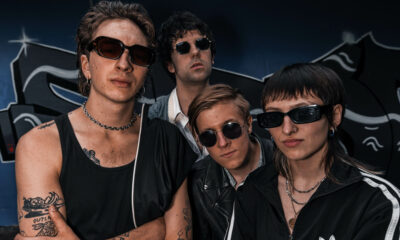
 Indie2 days ago
Indie2 days agoDeadset Premiere Music Video for Addiction-Inspired “Heavy Eyes” Single
-

 Alternative/Rock2 weeks ago
Alternative/Rock2 weeks agoThree Lefts and a Right Premiere Their Guitar-Driven Single “Lovulator”

